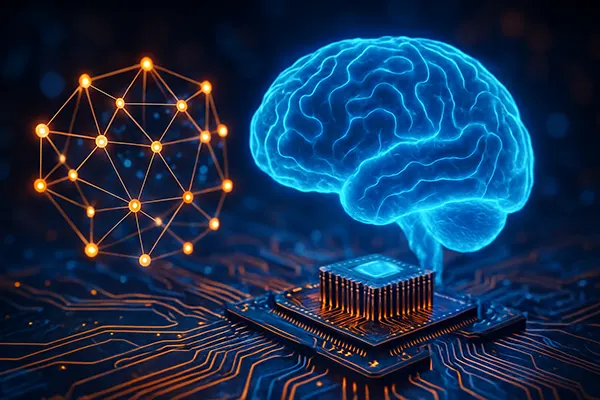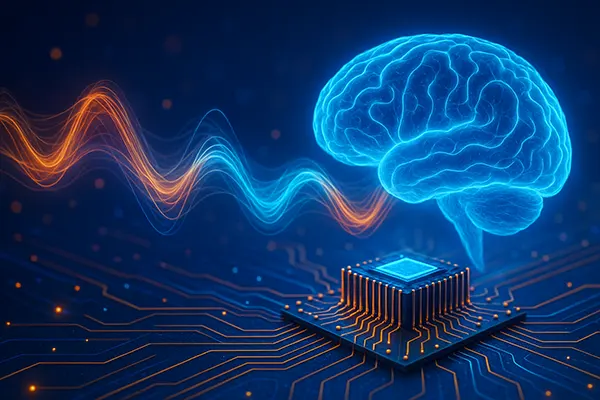
Quantum Machine Learning: How Quantum Computing is Transforming Artificial Intelligence
Quantum Machine Learning (QML) is no longer a theoretical concept—it’s a rapidly evolving discipline that merges quantum computing with artificial intelligence (AI). In 2025, this intersection is already showing potential to break through classical computing limitations, providing AI systems with unprecedented processing power and capabilities. While QML is still in the early phases of practical implementation, research and experimentation have made significant strides, particularly in areas such as optimisation, data encoding, and pattern recognition.
Real-World Use Cases of Quantum Machine Learning in 2025
As of June 2025, QML has shifted from theoretical applications to experimental implementations in sectors like finance, healthcare, and logistics. Quantum-enhanced models are being tested to solve complex problems with vast data structures and intricate interdependencies. For instance, quantum computers are currently aiding pharmaceutical companies in identifying molecular structures and optimising drug discovery pipelines more efficiently than classical supercomputers.
In the finance sector, leading institutions like JPMorgan Chase and Goldman Sachs are collaborating with quantum providers to improve fraud detection models. These models leverage quantum algorithms such as Quantum Support Vector Machines (QSVMs) to analyse transactional data faster and with improved accuracy. In logistics, companies are using quantum-enhanced reinforcement learning to optimise supply chain operations in real-time, even under volatile conditions.
Although many of these applications are at a proof-of-concept or limited deployment stage, the results suggest that QML has a tangible impact on accelerating decision-making processes, especially when vast combinations and permutations are involved.
Challenges Facing QML Adoption
Despite promising use cases, several barriers still impede widespread adoption. The most significant challenge lies in the availability and scalability of quantum hardware. Even the most advanced quantum computers today operate with a limited number of stable qubits, which restricts the complexity of AI models that can be executed.
Additionally, the development of quantum-native algorithms for machine learning tasks is still a niche expertise. Most data scientists and AI engineers lack training in quantum mechanics, which creates a knowledge gap that must be addressed through cross-disciplinary education initiatives and academic-industry partnerships.
There’s also a substantial issue with error rates and quantum decoherence, which can distort computations. To mitigate this, researchers are focused on improving quantum error correction methods, which could take several more years to mature into practical solutions.
Quantum Advantage in AI Model Training
One of the most promising aspects of QML is the potential for quantum advantage in training deep learning models. Training large neural networks is computationally intensive and time-consuming. Quantum computers can theoretically perform linear algebra operations—such as matrix inversion and multiplication—at exponential speedups compared to classical machines.
In particular, algorithms like the Harrow-Hassidim-Lloyd (HHL) algorithm have demonstrated that under specific conditions, quantum circuits can significantly reduce the time it takes to solve systems of linear equations, which is foundational in model training. Although practical implementation still faces scalability hurdles, hybrid approaches that combine quantum and classical resources are proving useful in the short term.
These hybrid models are deployed in environments where quantum resources are used for bottleneck computations, while classical processors handle the broader data flow. This collaboration accelerates model convergence and allows researchers to experiment with more complex architectures without prohibitive computational costs.
Data Encoding and Quantum Feature Space
Another critical advantage of QML is its unique way of encoding data into quantum states. Unlike classical systems that process binary data, quantum systems can represent information using superposition and entanglement, which vastly expands the representational capacity of AI models.
Quantum feature space expansion allows for more expressive models that can capture subtle patterns in high-dimensional data sets. This is particularly beneficial in domains like medical diagnostics, where tiny differences in imaging or genetic sequences can signify major outcomes. QML can enhance the sensitivity of AI systems by detecting these micro-patterns with greater accuracy.
Moreover, quantum encoding methods like amplitude encoding and quantum kernel estimation are now being studied to enhance classification performance in real-world data scenarios. These developments are paving the way for AI applications that require deeper pattern generalisation and anomaly detection.

Strategic Outlook and Industry Readiness
From a strategic perspective, 2025 is a turning point for QML. Governments and corporations are making significant investments in quantum research, with countries like the United States, Germany, and China leading the way. Quantum technology is now part of national security and economic policy agendas, and AI is a key driver of these initiatives.
Tech companies such as IBM, Google, and Rigetti are actively releasing SDKs and cloud-based quantum access tools to democratise QML development. These tools offer simulated environments for experimenting with QML models, which enables broader adoption among academic institutions and startups alike. Such ecosystems are critical for cultivating future quantum-AI talent.
At the same time, the business sector is cautiously optimistic. Many organisations are forming quantum task forces and allocating R&D budgets toward evaluating QML’s return on investment. While full-scale operationalisation is not yet feasible, early adopters who prepare now are likely to lead in future innovation cycles when QML becomes mature and scalable.
Skills and Interdisciplinary Collaboration
Real progress in QML will require more than just hardware evolution—it demands interdisciplinary collaboration. Physicists, computer scientists, mathematicians, and AI experts must work together to align theoretical potential with engineering realities. Educational institutions are responding by introducing specialised degrees in Quantum Information Science that include AI modules.
Furthermore, coding languages such as Qiskit (IBM), PennyLane (Xanadu), and Cirq (Google) are bridging the gap between quantum logic and AI modelling. These tools make it easier for software engineers to contribute to quantum innovation without needing a full physics background.
Upskilling the workforce and fostering cross-sector dialogue is not only necessary but urgent. Only through collective effort can QML evolve from a niche discipline into a foundational technology that reshapes the AI landscape.
